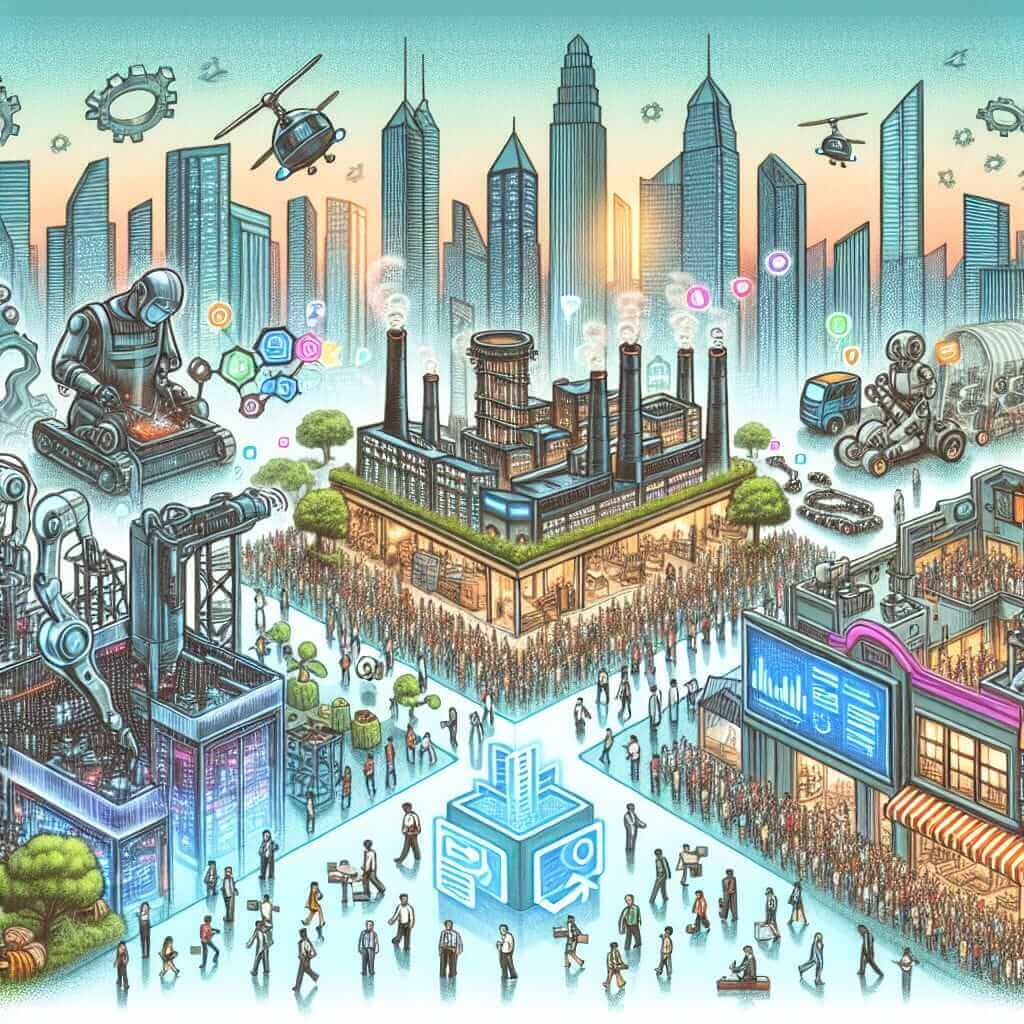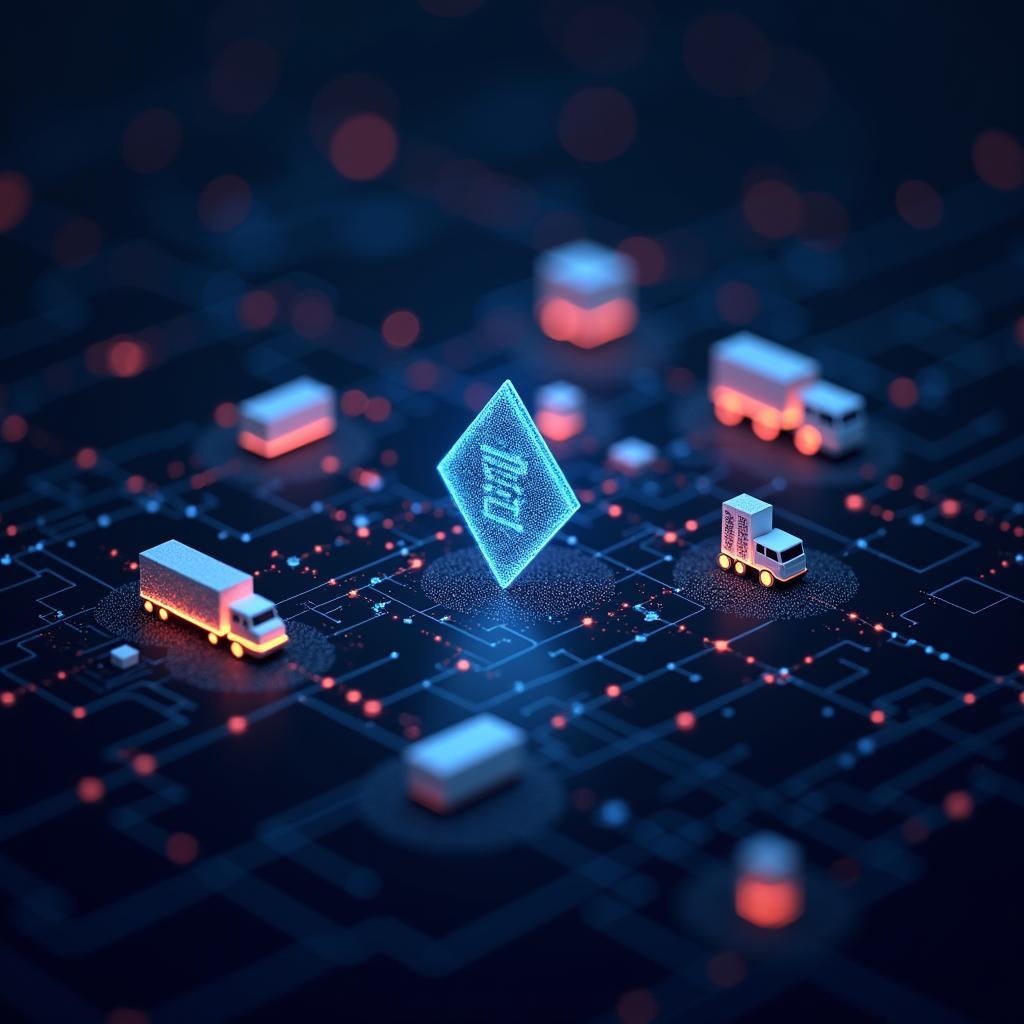The IELTS Reading section is designed to assess a candidate’s ability to read and understand complex textual information. Among the various themes that often appear in IELTS Reading tests, topics related to technology and economics are particularly prevalent. One such topic that is both current and likely to feature in future exams is “What are the economic consequences of digital transformation?”.
Nội dung bài viết
Economic Consequences of Digital Transformation: A Reading Practice
Introduction
The IELTS reading exam requires students to read various texts and answer questions that test their comprehension and inference skills. Topics such as technology and its economic implications are common, reflecting real-world trends and issues. “Digital transformation,” a term that refers to the integration of digital technologies into all business areas, fundamentally changing how companies operate and deliver value to customers, is a salient topic. Given its relevance, understanding the economic consequences of digital transformation could be invaluable for your IELTS preparation.
Reading Passage: Hard Text
Digital Transformation and Its Economic Impact
Digital transformation refers to the large-scale integration of digital technologies into businesses’ core operations. It encompasses various aspects ranging from the adoption of artificial intelligence (AI) to the implementation of cloud computing, data analytics, and the Internet of Things (IoT). Its effects on the economy are profound, touching upon productivity, employment, competition, and consumer behaviors.
One of the primary economic consequences of digital transformation is the increase in productivity. With automation and AI, businesses can streamline operations, reduce errors, and speed up production processes. For instance, a manufacturing company using IoT sensors can monitor machinery in real-time, predicting failures before they occur and thus minimizing downtime. This capability not only saves costs but also enhances the efficiency of operations.
However, the influx of digital technologies also reshapes the labor market. On one hand, there is a growing demand for tech-savvy professionals who can manage and innovate within digital frameworks. On the other hand, conventional roles that rely on manual processes are increasingly being marginalized. This dichotomy has led to job displacement in certain sectors while creating lucrative opportunities in others. For example, while data entry jobs may dwindle, roles in data analysis and cybersecurity are burgeoning.
The competitive landscape is also being transformed. Digital technologies lower entry barriers, enabling startups to compete with established enterprises by leveraging innovative digital solutions. Amazon’s rise in e-commerce epitomizes how digital transformation can disrupt traditional business models. As a result, companies must continuously adapt by integrating digital strategies to maintain their market positions.
Furthermore, consumer behaviors and expectations are evolving in the digital age. Customers now expect seamless, personalized, and quick services, compelling businesses to adopt digital solutions to meet these demands. This shift in consumer expectations has given rise to digital marketing and e-commerce, areas critical to modern economic activities.
In conclusion, digital transformation is an inexorable force reshaping the economic landscape. Its implications are multifaceted, influencing productivity, employment, competition, and consumer behaviors. As businesses and economies continue to navigate this transformation, the ability to harness these changes becomes imperative for growth and sustainability.
 Digital Transformation Economic Impact
Digital Transformation Economic Impact
Questions
Multiple Choice
-
What is the primary focus of digital transformation according to the passage?
a. Reducing labor costs
b. Integrating digital technologies into core operations
c. Expanding businesses internationally
d. Enhancing customer service -
How does digital transformation affect productivity?
a. By reducing the need for manual labor
b. By increasing errors in operations
c. By slowing down production processes
d. By streamlining operations and reducing errors
True/False/Not Given
-
Digital transformation exclusively benefits large enterprises.
- True
- False
- Not Given
-
The rise of e-commerce has had no impact on traditional retail businesses.
- True
- False
- Not Given
Sentence Completion
- Digital transformation can lead to __ in sectors that rely heavily on manual processes.
Summary Completion
Complete the summary below using words from the passage.
Digital transformation impacts the economy by increasing (6) through technologies like AI and IoT. However, it also leads to job (7) in manual roles, although it creates new opportunities in tech-related fields. It reshapes the (8) ___ landscape by lowering entry barriers and changing consumer expectations, compelling businesses to adopt digital strategies.
Answer Key
- b
- d
- False
- False
- job displacement
- productivity
- displacement
- competitive
Common Mistakes and Tips
- Not reading the entire passage: Ensure you read the passage fully before attempting to answer questions. Skimming can lead to missing critical details.
- Ignoring question instructions: Pay attention to whether the question is asking for True/False/Not Given or Yes/No/Not Given.
- Misinterpreting vocabulary: Practice understanding vocabulary in context. Use the IELTS word lists and practice regularly.
Vocabulary
- Productivity (noun): /ˌprɑː.dəkˈtɪv.ə.ti/
- The efficiency of production of goods or services.
- Displacement (noun): /dɪsˈpleɪs.mənt/
- The action of moving something from its place or position.
- Seamless (adjective): /ˈsiːm.ləs/
- Smooth and continuous, with no apparent gaps or spaces between one part and the next.
Grammar Focus
- Relative Clauses:
- E.g., “A manufacturing company [which/that uses IoT sensors] can monitor machinery in real-time.”
- Use relative clauses to add extra information about the noun.
Tips for High IELTS Reading Scores
- Practice Regularly: Consistency is key in improving reading skills.
- Enhance your Vocabulary: Learn and regularly review new words.
- Time Management: Work on managing your time effectively to handle all three passages within the 60-minute timeframe.
- Understand Question Types: Familiarize yourself with different question formats used in the IELTS Reading section.
For more insights into how digital transformation impacts communities, and other related topics, visit our article on the social impacts of digital transformation on communities.
By incorporating these strategies and practice materials into your study routine, you can enhance your IELTS Reading skills and improve your overall band score. Happy studying!

